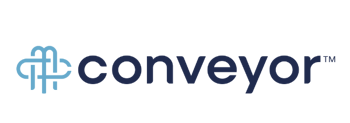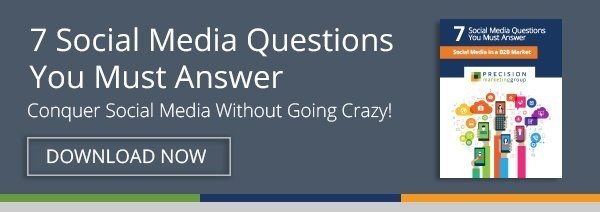2016 has been a year of ups and downs. The death of Vine – Down. The rise of Snapchat filters – Up. Facebook Live videos – Up. Instagram stories – Undecided? As usual, social media channels in 2016 have updated so rapidly, it’s difficult to keep up.
Amidst the constant change, Pinterest has also rolled out a number of updates in 2016. Like Instagram, Pinterest utilizes pictures to tell a story. And it may come to no surprise that this social platform is dominated by visually interesting B2C businesses. Hospitality, ecommerce, and interior design companies rule the roost here, but that shouldn’t discourage all of the socially savvy B2B businesses out there.
In the past year, I’ve recently undertaken Pinterest marketing efforts for a client that caters to both B2B and B2C audiences. With a relatively small amount of budget and time, Pinterest has overtaken both Facebook and Twitter as the top social media source of traffic to their website! Additionally, Pinterest has proven itself to be a valuable tool for relationship building with local partners.
So, my message for today’s blog post is quite simple. Just because you’re not in a "visual" industry, it doesn’t mean you can’t successfully develop a Pinterest marketing strategy and work it to your advantage. With 110 million active monthly users, you could be missing out on valuable opportunities to reach your prospects. Below, find my 8 tips for building a Pinterest marketing strategy in the B2B space.
A quick note on Pinterest demographics...
Before we dive into the tips, I do want to point out the importance of knowing your audience. Pinterest isn’t used by everyone. The demographics of Pinterest users are slowly changing, but it’s primarily used by women between the ages of 18 and 29 (34%). Twenty-eight percent of users are between the ages of 30 and 49, and users between the ages of 50-64 make up 27%.
More male pinners are joining each month—but if you’re on the fence about Pinterest’s value, it may be worth doing a quick content survey. Reach out to a sampling of your clients to get their first-hand input on the social channels they use most frequently. If you’re willing to pay the $25-$85 per month (depending on the plan) for Survey Monkey, HubSpot has already created this survey for you!
Tip #1: Recycle your existing content.
B2B business face a unique set of challenges when engaging on visual channels like Pinterest and Instagram. There’s no doubt weddings and recipes make for perfect Pinterest fodder. But what can you do in professional services, manufacturing, or medical fields? The answer: content repurposing. Often in marketing, and in many other industries, it’s not about working harder so much as working smarter.
If you’re considering leveraging Pinterest, hopefully you’re already creating (or will be soon) other inbound marketing content like blog articles, downloadable eBooks and guides, infographics, webinars, etc. Create a board for each of your content areas and spend the extra 20 minutes to an hour to create a custom image for each pin. Of course, don't forget to link the pins to your respective pieces.
Here are a few great examples of companies employing a similar strategy:
Infographics are especially valuable on Pinterest. If you have data on why your product or offering is faster, better, or smarter, be sure to turn that information into a shareable graphic. Luckily, there are several free (or close to free) tools that can help you create simple infographics, including:
Tip #2: Create a sustainable Pinterest content calendar.
The hardest part of tackling a new social media channel is making sure that you don’t lose steam a few months down the line. It’s fun to post when you’re excited in the beginning, but as schedules get busy and results take time to build, it’s easy to let your social media accounts fall by the wayside.
To counteract this, I’d recommend creating a Pinterest marketing strategy that stretches at least 6 months out. Social media marketing is typically more about the long game—it takes time to build momentum (or content for that matter). If you’re giving up on Pinterest before the 6-12 month mark, you’re not giving yourself a true chance to succeed.
Again, it may take a considerable amount of time to design the images for your blog and other resources – especially if you’ve been creating content for some time and have lots to post on Pinterest! Take this design “down time” to create your content promotion calendar for each piece of your existing content. Many marketers have found that creating a Pinterest content calendar is a challenging feat, given the nature of the tool. Luckily HubSpot created this handy content calendar template to make this task a little easier. Go ahead and download the template for yourself!
Tip #3: Join in Pinterest conversations by repinning.
Pinterest, like all social channels, should incorporate a two-way conversation. If your strategy is to incessantly post your own content, your Pinterest success will falter before it’s even begun. You must engage in social conversations by repinning and commenting on complimentary pins.
Before you start your calendar, make a list of clients and partners that have a presence on Pinterest. Plan to create a few additional boards that feature repins from your network. A good rule of thumb to follow: for every piece of your own content that you promote, you should repin or engage with two or three partner pins.
Tip #4: Show off your company culture.
 This recommendation works for even the most visually challenging industries. All business hold employee events, open houses, or special event days. Take these opportunities to show off your awesome company culture!
This recommendation works for even the most visually challenging industries. All business hold employee events, open houses, or special event days. Take these opportunities to show off your awesome company culture!
Select a “historian” to be official photographer for each event. While you’re not likely to receive many repins from this type of content, you will be showing the human side of your business. People like to follow people, not giant faceless corporations. The more you can make people feel like they are engaging with a real person, the more likely you are to grow your Pinterest following.
Tip #5: Collaborate with your team on Secret Boards.
Pinterest doesn’t need to be a one-man show! Engage your team by creating secret boards. Not only can you use these boards to collectively work together to find new content, but you can also use a hidden board for inspiration. If you see a board that does a great job of promoting their blog content, save it on a private board for future inspiration. This tactic may be easiest to relate to marketing activities, but it works for all business functions.
Hidden boards are also a great spot to keep tabs on your competitors. Want to see what new products they're launching or the types of content they're writing? Store that information on a secret board to which your entire team can contribute. You can even store important documents on hidden team boards for easy access.
Here are the steps to create a hidden board:
- Step 1: Select ‘Create a Board’ or select the ‘+’ symbol.
- Step 2: Set the ‘Secret’ button to Yes. Simple as that!

Tip #6: Create co-branded boards with valued business partners.
Piggybacking on Tip #3 and the concept of a two-way conversation, co-branded or collaboration boards are a fabulous way to strengthen relationships with business partners. This tactic is especially beneficial if you have minimal content creation resources. Collaboration boards allow you to utilize the great content of your partner businesses without having to create it entirely by yourself.
Here are the steps to create a shared board:
- Step 1: Create a new board.
- Step 2: Select the pencil icon to edit the board.
- Step 3: Type in the name or email address of your collaborator(s).

Tip #7: Add a “Top Pin” or “Pin of the Month” section to your newsletter.
Acquiring new Pinterest followers may happen slowly at first. To jumpstart this process, consider adding a Top Pin or Pin of the Month section to your eNewsletters. To achieve this, you’ll want to screenshot the pin with the best engagement or an important message you want to highlight. This tactic will help promote your Pinterest page, but it will also build an engaging and easy-to-update section into your email newsletter.
*Note: This works both ways! You can also promote your Newsletters in Pinterest with a newsletter board.
Tip #8: Get familiar with Pinterest Analytics (and a custom URL builder).
Pinterest has in-depth analytics to help you make educated decisions about your marketing strategy. If you’re not paying attention to the analytics, you're missing the big picture.

To access your analytics dashboard, select the ‘Analytics’ navigation link next to the Pinterest Icon. Here are few valuable resources if you’re new to analyzing and digesting social media analytics:
- Pinterest Analytics Help Center
- Pinterest Analytics: A Quick Walkthrough
- How to Use Pinterest Analytics: 6 Metrics Worth Measuring
Additionally, to have greater visibility into the success of your pins (especially when it comes to content promotion), consider using a custom URL builder. HubSpot has one that makes this process simple, but Google Analytics also has a free tool.
Have a Pin-tasic holiday season!
Cheesy one liners aside, Pinterest is a fantastic tool for B2B businesses. I’ve personally seen sustained website traffic and growth through utilizing Pinterest. I know you can too with a little planning and effort.
On behalf of everyone at PMG, we wish you wealth, health and happiness in 2017. As always, don’t hesitate to reach out to us if you have any questions about Pinterest B2B marketing.




